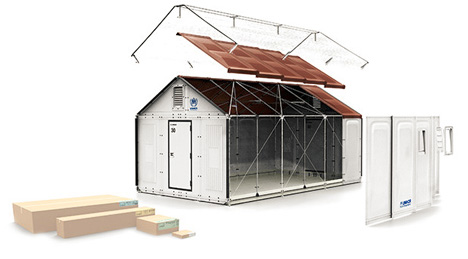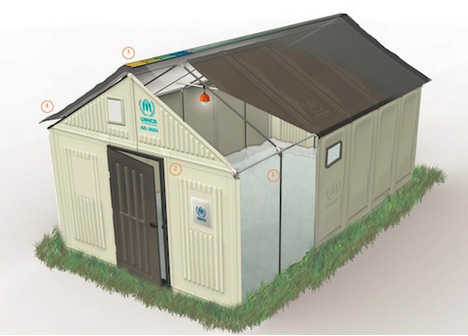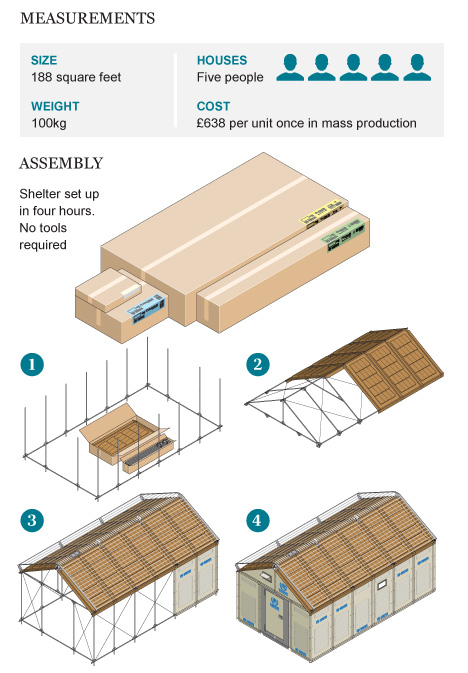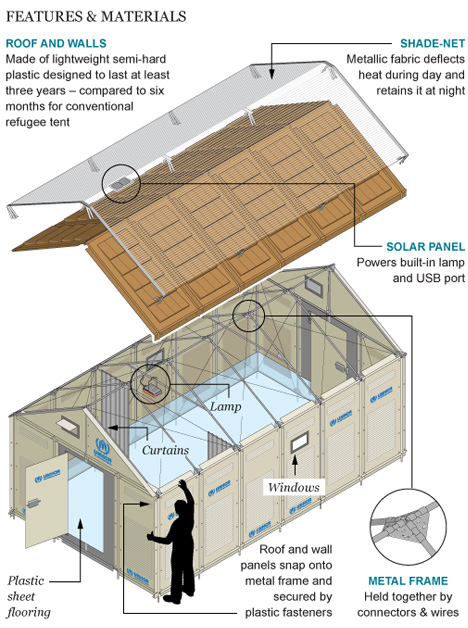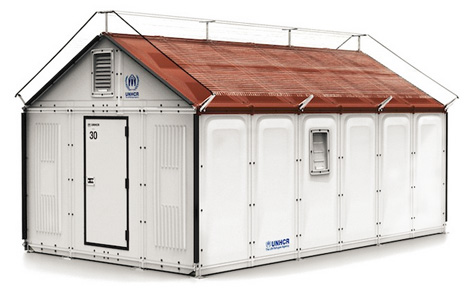Emergency shelters are designed to be short-term solutions, and many cannot withstand rain, wind and sun for more than six months. Yet the average stay in refugee camp is over twenty times that duration.
The IKEA Foundation, in cooperation with the United Nations High Commissioner for Refugees, has developed a longer-term solution to this problem, turning their experience with flat-pack furniture and language-free instruction manuals toward disaster relief efforts in and around war-torn places like Syria (they are already testing in Lebanon and Iraq). Sticklers for detail should scroll carefully below for a step-by-step deconstruction of what goes into this remarkable dwelling.
The problem, in part, is building the most universal unit possible in a world where emergencies happen globally, spanning regions both hot and cold and with vastly different cultural norms. Their solution is much like an ordinary IKEA product: flexible, adaptable, modular and packed into cardboard boxes of components. Naturally, they require no tools that are not included.
While the structures themselves are still only expected to last a few years, they are made to be modified, enhanced and expanded in various ways. For instance, earthen walls and corrugated metal roofs can be pushed up against, fastened to and ultimately help reinforce the core buildings, or even eventually replace the need for underlying framework entirely, rendering it redundant.
The shelters are constructed primarily from polymer panels that clip into a wire frame. On top sits an aluminum-mesh roofing sheet that is designed to reflect sunlight by day and retain heat by night. Solar energy charges a USB outlet for electrical needs. The target price range for mass production is under $1000, making it affordable in bulk to international organizations. Images and diagram via The Telegraph, IKEA Foundation and Graphic News.
